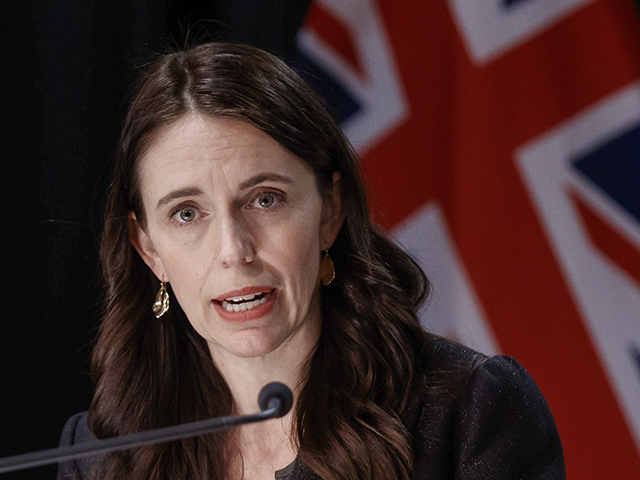The deadly synthetic opioid known as fentanyl is hitting New Zealand hard, and drug abuse experts say the authoritarian government of Prime Minister Jacinda Ardern was completely unprepared for its arrival.
The UK Guardian noted the arrival of fentanyl in New Zealand was heralded by a much less deadly event than many other countries have experienced: 12 people treated for accidentally overdosing on the powerful synthetic because they thought it was cocaine. Drug dealers are fond of mixing cheap, relatively easy-to-get fentanyl with low-quality legacy drug products to give them an extra kick.
None of New Zealand’s dozen victims died, but several were hospitalized in critical condition. About 70,000 deaths were attributed to fentanyl in the U.S. last year, a significant increase from the year before that.
A recent high-profile fentanyl bust in the U.S., by contrast, involved two traffickers carrying enough pills to kill several million people. The traffickers were bizarrely released from custody on the orders of a California court Tuesday, only four days after they were arrested.
The Guardian’s correspondents noted that protections widely available in other countries, such as testing strips and the overdose treatment Naloxone, are in short supply because New Zealand assumed the fentanyl epidemic had passed it by.
“If this indeed turned into a fentanyl adulteration of our drug supply, we don’t have the tools in place to help prevent overdose,” New Zealand Drug Foundation executive director Sarah Helm said. “It’s a miracle that those dozen people have survived the overdose and that we actually had Naloxone to be able to respond to them.”
Drug traffickers arrested in California with 150,000 fentanyl pills released after just days in jail https://t.co/zJDljtdf7I
— Fox News (@FoxNews) June 28, 2022
According to Helm, only one retail outlet in New Zealand is currently selling fentanyl test strips — crucial gear for first responders attempting to diagnose overdose victims — and the country’s nonprofit organizations only have a thousand of them in stock.
Helm told Stuff NZ on Monday that the first 12 victims were very fortunate to arrive at a hospital that happened to stock the treatments needed to save their lives. She criticized New Zealand’s regulations for Naloxone as “frustrating” and illogical.
“We are quite hamstrung in terms of being able to respond to this, should it turn into a bigger situation. At the moment, we’re really hoping that we’ve seen the perimeter of the problem,” she said.
The New Zealand Ministry of Health insisted Naloxone is “widely available” to both clinics and first responders. The ministry said police and paramedic units are being issued extra supplies, and meanwhile warned the public “not to take any white powder at this time.”
Dr. Emily Einstein of the U.S. National Institute of Drug Abuse warned the NZ Herald on Monday that fentanyl tends to catch fire with traffickers once it enters a market because its potency makes it easy to transport and it is enormously profitable. A fatal dose of fentanyl is comparable in size to a few grains of salt, and its effects can be quite insidious, slowly destroying the user’s ability to breathe normally until they suffocate.
“When it’s mixed with cocaine the danger is the person taking it might not even realize that the cocaine contains fentanyl, especially if they don’t take opioids in any other capacity, they won’t have very high tolerance and it’s an even greater risk of overdose,” she said.
Einstein noted fentanyl is highly addictive and it often replaces other addictions for deliberate users.
“In the United States in many places it’s no longer even possible to get heroin, the drug supply is predominantly fentanyl, so people who have addiction to opioids must keep taking them in order to avoid withdrawal symptoms and for that reason sometimes people will seek out fentanyl,” she said.
RNZ quoted drug experts who said some fentanyl was discovered for sale as heroin four years ago, but this weekend’s incident was a much more disturbing debut for a potentially far more serious epidemic.
Government officials said they took appropriate precautions after the first fentanyl sightings in 2018, while critics said the government missed that wake-up call, leaving drug treatment clinics under-funded and under-equipped.
David Lewis, a New Zealand resident whose daughter Carolina was killed at 23 by a fentanyl overdose when she was studying in the United States, demanded a maximum crackdown on traffickers.
“This is not overdosing, this is being poisoned. It’s manslaughter,” he said.

COMMENTS
Please let us know if you're having issues with commenting.